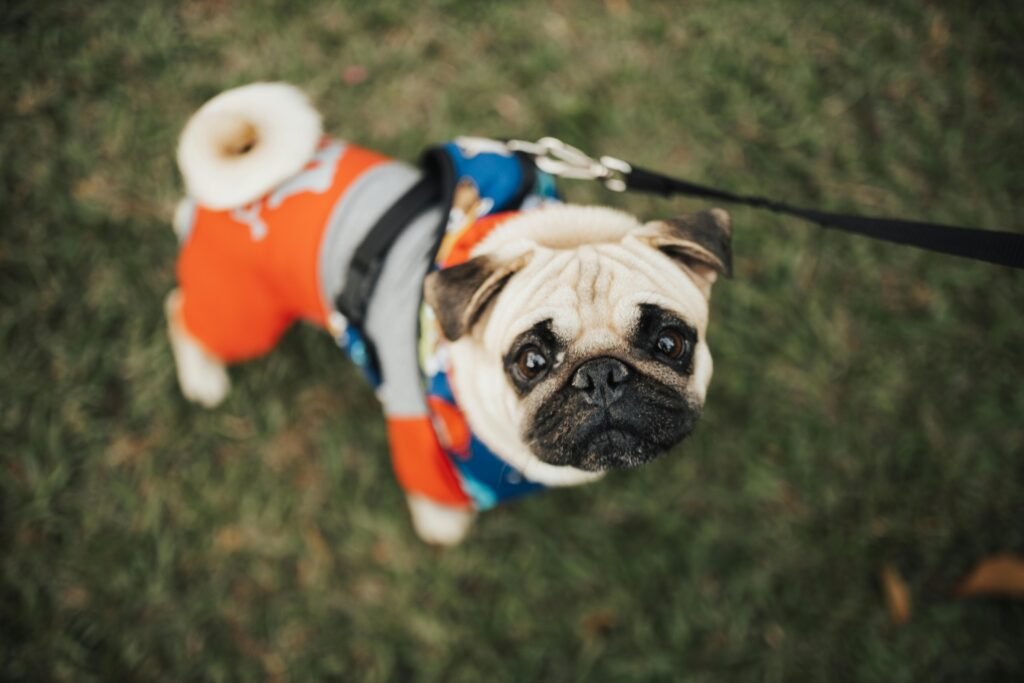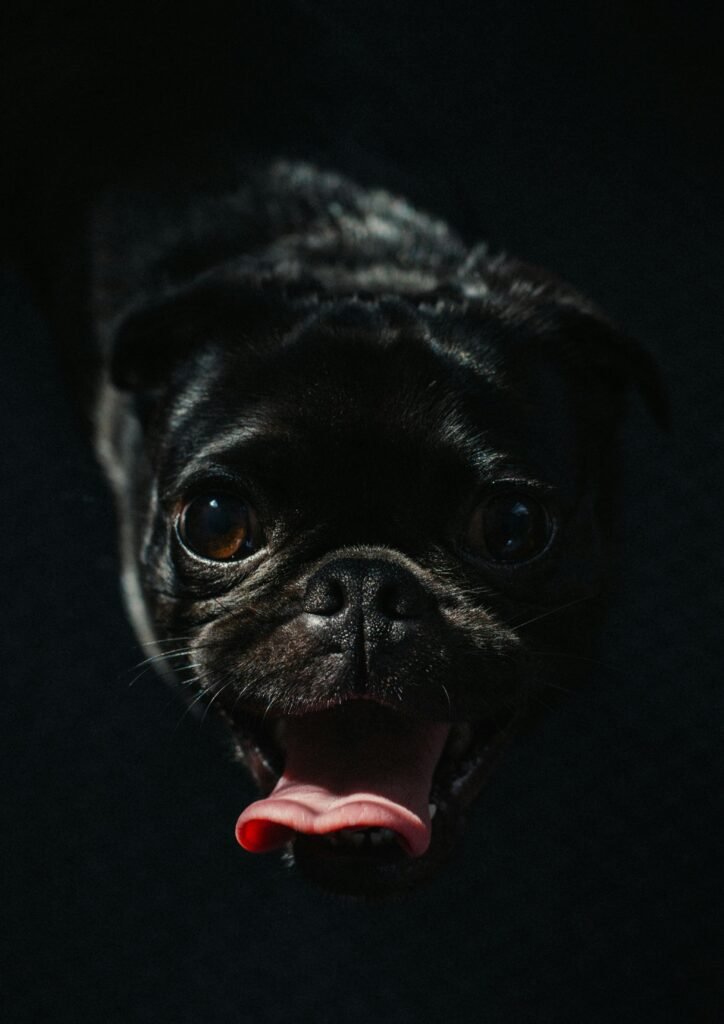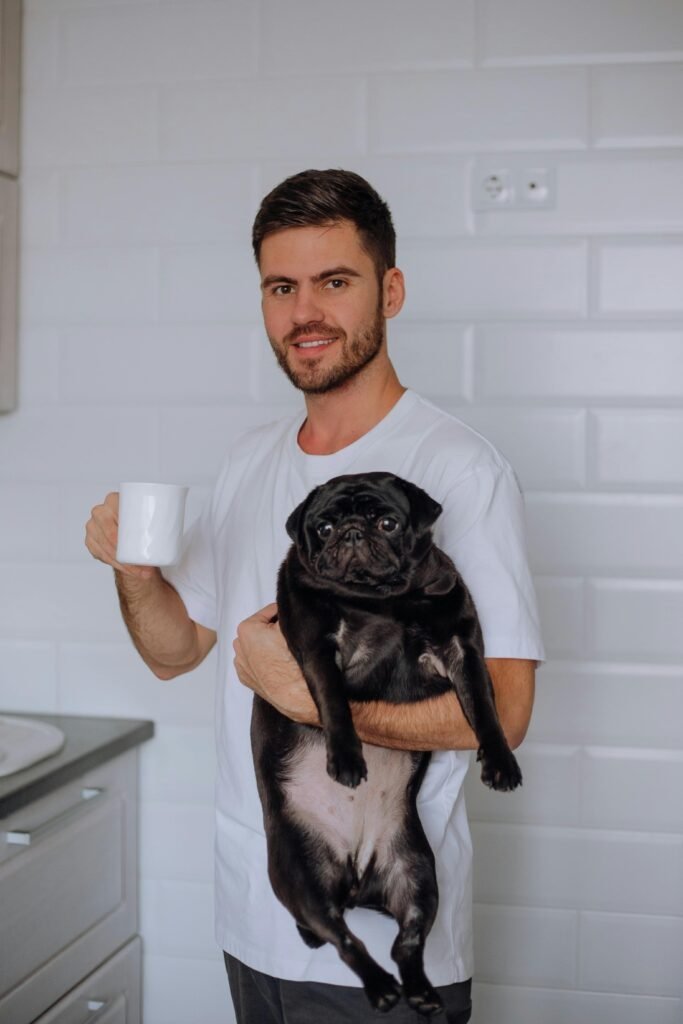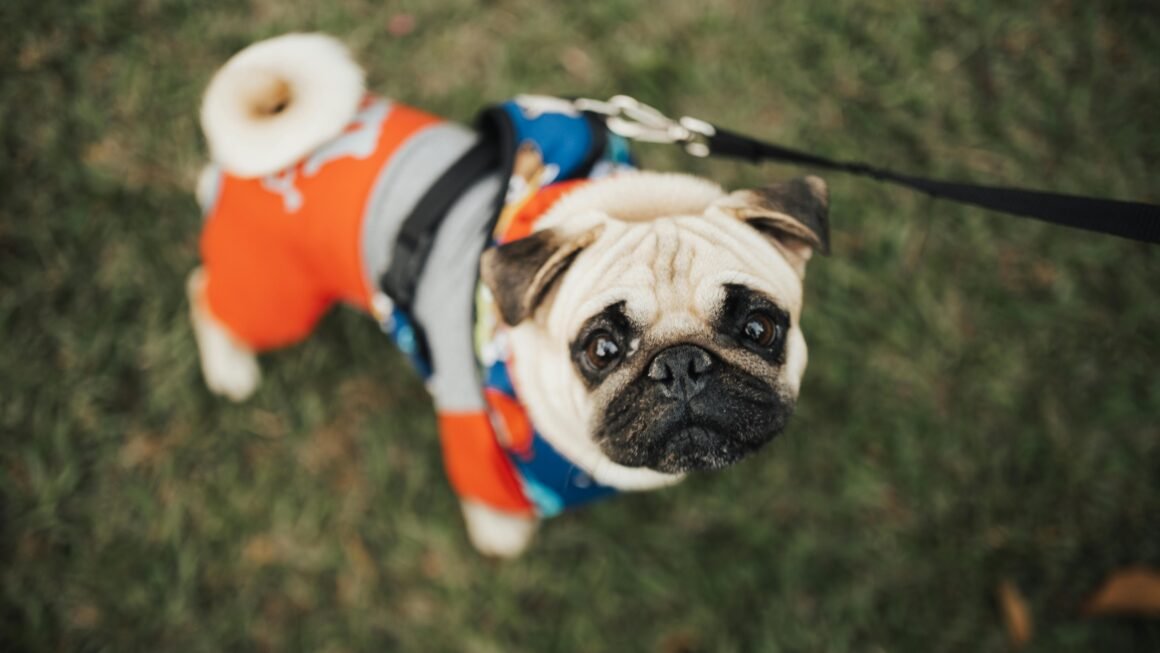If you’ve ever encountered a pug, you know just how adorable and endearing they can be. But have you ever wondered what makes these lovable little creatures tick? In this article, we will take a closer look at the behavior and temperament of pugs, shedding light on their unique traits and offering insights into their quirky personalities. From their love of attention to their tendency to snore, get ready to uncover the fascinating world of pug behavior.

This image is property of images.pexels.com.
Origin and History
Origins in China
The adorable and charming Pug breed has a rich history that dates back many centuries. Pugs are believed to have originated in China over 2,000 years ago, during the time of the Han Dynasty. They were highly valued as companions to Chinese nobility and were even considered to be sacred. Pugs were often kept in luxurious temples and were treasured as loyal and devoted companions.
Brought to Europe by Dutch traders
It was not until the 16th century that Pugs made their way to Europe, thanks to Dutch traders who discovered the breed during their travels. The Dutch fell in love with these small, wrinkled dogs and brought them back to Europe, where they quickly gained popularity. Pugs became a favorite amongst the European aristocracy, including the royal courts of England and France. They were adored for their entertaining nature, affectionate personality, and undeniably charming appearance.
Popularity in royal courts
Pugs quickly became a symbol of luxury and refinement, especially amongst the royal courts in Europe. Their delightful antics and endearing facial expressions made them a hit with the monarchs. It is said that Pugs were even dressed in extravagant outfits and were treated like members of the royal family. Their popularity continued to grow, and they soon became cherished pets all over Europe, adored by both the nobility and commoners alike.
Physical Characteristics
Distinctive wrinkled face
One of the most distinguishing features of the Pug is its adorable wrinkled face. Their wrinkles, also known as “prince marks,” are particularly prominent on the forehead and around the eyes. These wrinkles give Pugs a unique and unmistakable expression, with their furrowed brow lending an air of wisdom and adorability.
Short muzzle and curled tail
Pugs have a short, square-shaped muzzle that adds to their charm. Their flat, pushed-in faces give them a characteristic appearance that is both cute and endearing. Another physical trait that sets Pugs apart is their curly tail, which curls tightly over their backs. This curly tail is a Pug trademark and contributes to their graceful movements.
Compact and muscular build
Despite their small size, Pugs have a surprisingly sturdy and muscular build. They have a compact body with a broad chest and well-rounded ribs. Their strong muscles are evident, adding to their overall robust appearance. Pugs may be small, but they are known for their impressive strength and agility.

This image is property of images.pexels.com.
Personality Traits
Eager to please
Pugs are known for their eagerness to please their human companions. They have a natural desire to be loved and are happiest when they are a part of the family. Pugs thrive on human attention and affection and will go to great lengths to bring a smile to your face. Their ever-present desire to please makes them wonderful companions and loyal friends.
Friendly and sociable
If there’s one word that perfectly describes a Pug’s personality, it’s “friendly.” Pugs are incredibly sociable and get along well with people of all ages. They are typically fond of strangers and are known to excel at making new friends. Pugs have a unique ability to put a smile on anyone’s face and are sure to charm everyone they meet with their outgoing nature.
Playful and mischievous
Pugs have a playful and mischievous side that adds even more fun to their already delightful personality. They have a penchant for entertaining their families with their silly antics and funny expressions. Whether it’s zooming around the house or engaging in a game of tug-of-war, Pugs are always up for an adventure. Be prepared for a daily dose of laughter and entertainment with your Pug by your side!
Stubborn at times
While Pugs are generally eager to please, they can also be a little stubborn at times. This stubbornness can make training a bit challenging, especially for first-time dog owners. It’s important to be patient and consistent during training sessions to overcome their stubborn streak. With the right approach and positive reinforcement, Pugs can become well-behaved and obedient companions.
Intelligence and Trainability
Moderate intelligence
Pugs are known for their moderate intelligence levels. They possess a reasonable degree of problem-solving skills and are quick to learn basic commands and obedience cues. However, it’s important to remember that they may not excel in more complex tasks compared to highly intelligent breeds. Despite this, Pugs make up for any intelligence gaps with their loving and charming personalities.
May be stubborn during training
As mentioned earlier, Pugs can be stubborn when it comes to training. Their independent nature and strong will can sometimes lead to resistance during training sessions. It’s crucial to approach training with patience, consistency, and positive reinforcement. Reward-based training methods that involve treats, praise, and playtime work best for Pugs.
Positive reinforcement-based training works best
Pugs respond very well to positive reinforcement training methods. By using plenty of praise, rewards, and treats, you can motivate and encourage your Pug to learn and obey. It’s essential to make training sessions fun and engaging to keep their attention and interest. Harsh or punitive techniques should be avoided, as they can cause fear or anxiety in this sensitive breed.
May have difficulty with housebreaking
Pugs are not known for their exceptional housebreaking skills. This breed’s stubbornness and a tendency to have a mind of their own can make the housebreaking process a bit challenging. Consistency and patience are key when potty training a Pug. Establishing a routine and using positive reinforcement techniques will greatly help in teaching them appropriate bathroom habits.

This image is property of images.pexels.com.
Exercise and Activity
Moderate exercise needs
Pugs have moderate exercise requirements and are well-suited for families living in both small apartments and spacious homes. While they enjoy daily exercise, they are not high-energy dogs that require hours of physical activity. A couple of short walks or play sessions throughout the day are usually sufficient to keep them happy and healthy.
Short walks and play sessions
Taking your Pug for short walks around the neighborhood or playing in a securely fenced yard are excellent ways to meet their exercise needs. Pugs enjoy exploring their surroundings, sniffing out interesting scents, and interacting with their environment. Engaging them in interactive toys, such as puzzle feeders or treat-dispensing toys, can also provide mental stimulation while keeping them physically active.
Prone to overheating, avoid excessive exercise in hot weather
Pugs have a brachycephalic (short-nosed) face, which makes them susceptible to overheating. They are not well-suited for intense physical activities, especially in hot weather. It’s important to avoid excessive exercise during high temperatures and to provide them with plenty of water and shade when outdoors. Always be mindful of their breathing and make sure they have frequent breaks during exercise.
Mental stimulation important for preventing boredom
In addition to physical exercise, mental stimulation is crucial for preventing boredom in Pugs. They are intelligent dogs who thrive on mental challenges. Providing them with interactive toys, puzzle games, and obedience training sessions will keep their minds sharp and prevent destructive behaviors that may arise from boredom. Incorporating a variety of mental stimulation activities into their daily routine will keep them engaged and content.
Socialization and Interaction
Get along well with children and other pets
Pugs are known for their friendly and sociable nature, making them excellent family pets. They get along well with children, forming strong bonds and nurturing relationships. Pugs can handle the unpredictable nature of children and are generally patient and tolerant. However, it’s essential to teach children how to properly interact with dogs and always supervise their interactions to ensure the safety and comfort of both the child and the Pug.
May have separation anxiety if left alone for long periods
Pugs thrive on human companionship and can develop separation anxiety if left alone for extended periods. They are emotionally dependent dogs and tend to form strong bonds with their owners. Leaving them alone for long hours can cause distress and anxiety, resulting in destructive behaviors or excessive barking. If you have a busy schedule, it’s important to provide your Pug with plenty of mental stimulation, toys, and even consider hiring a dog walker or arranging playdates to keep them company.
Require regular socialization to prevent shyness or aggression
Like any breed, Pugs require early and ongoing socialization to ensure they grow up to be well-rounded and friendly dogs. Exposing them to a variety of environments, people, animals, and situations from a young age will help prevent shyness or aggression. Enrolling them in puppy socialization classes and introducing them to different stimuli and experiences will build their confidence and teach them how to interact appropriately with others.
Health and Common Issues
Brachycephalic syndrome and breathing difficulties
One of the primary health concerns with Pugs is their brachycephalic syndrome. Due to their flat faces, Pugs may experience difficulty breathing, especially in warm or humid conditions. They are sensitive to heat and can quickly succumb to heatstroke. It’s important to monitor their breathing, avoid overexertion in hot weather, and provide them with plenty of cool and fresh air.
Eye problems such as corneal ulcers or dry eyes
Pugs are prone to various eye problems, including corneal ulcers, dry eyes, and eye infections. Their large, bulging eyes are more susceptible to injury and require regular cleaning and care. It’s important to keep their eyes clean and free from irritants, and to have regular vet check-ups to monitor their eye health.
Skin fold dermatitis due to wrinkles
The adorable wrinkles that give Pugs their unique appearance can also be a source of trouble. The folds and wrinkles in their skin require regular cleaning and proper hygiene to prevent skin fold dermatitis. Moisture, dirt, and bacteria can accumulate in these skin folds, leading to irritation, infection, and discomfort for your Pug. Regularly inspecting and cleaning the wrinkles is essential for their hygiene and overall skin health.
Obesity and joint issues
Pugs have a propensity for gaining weight, especially if overfed or given excessive treats. Obesity can lead to a host of health problems, including joint issues and increased risk for heart disease. It’s important to manage their diet, feed them a balanced and appropriate amount of food, and encourage regular exercise to prevent obesity and maintain good joint health.
Prone to heatstroke
As mentioned earlier, Pugs are highly sensitive to heat and are prone to heatstroke. It’s crucial to keep them cool during hot weather by providing ample shade, access to fresh water, and avoiding exercise during the hottest parts of the day. Monitoring their breathing and seeking immediate vet attention if they exhibit signs of distress or overheating is essential for their well-being.
Grooming Needs
Regular brushing to manage shedding
Pugs have a short, smooth coat that requires regular brushing to manage shedding. Despite their short fur, Pugs can shed moderately throughout the year. Regular brushing with a soft-bristle brush or rubber grooming glove will help remove loose hair and keep their coat looking clean and healthy. Paying extra attention to areas with wrinkles, such as the face and neck, will prevent dirt or debris from accumulating.
Cleaning facial wrinkles to prevent infections
The wrinkles on a Pug’s face require special care to prevent infections and discomfort. It’s important to regularly clean their facial folds using a gentle, pet-safe wipe or warm damp cloth. This helps remove any dirt or debris that may be trapped in the wrinkles and reduces the risk of bacterial or fungal infections. It’s important to thoroughly dry the wrinkles after cleaning to prevent moisture buildup.
Nail trimming and dental care
Regular nail trimming is important to prevent overgrowth and discomfort for your Pug. Using a dog-specific nail clipper or grinder, carefully trim the tips of their nails, avoiding cutting into the quick. It’s crucial to maintain good dental hygiene to prevent dental issues, such as tooth decay or gum disease. Regular brushing with a dog-specific toothbrush and toothpaste, as well as providing dental chew toys, can help keep their teeth clean and healthy.
Bathing as needed, avoiding excessive dampness in wrinkles
Pugs generally have a clean and odor-free coat, thanks to their grooming habits. However, occasional baths are necessary to keep them looking and smelling their best. It’s important to use a mild, dog-specific shampoo and to avoid excessive dampness in their facial wrinkles. Dampness can lead to skin fold dermatitis, so it’s important to thoroughly dry their wrinkles after bathing.
Common Behavioral Issues
Separation anxiety and clinginess
Pugs are known to develop separation anxiety if left alone for extended periods. Their strong attachment to their owners makes them prone to anxiety when separated. To prevent separation anxiety, it’s important to gradually acclimate them to being alone and provide plenty of mental stimulation and distractions when you’re away. Crate training can also help create a safe and secure space for your Pug when you’re not at home.
Attention-seeking behaviors
Pugs are social dogs that thrive on attention and affection from their human companions. They may engage in attention-seeking behaviors like barking, pawing, or bringing toys to you to get your attention. It’s important to set boundaries and teach them appropriate ways to seek attention. Reinforcing calm behavior and rewarding positive actions will help curb excessive attention-seeking behaviors.
Excessive barking
Pugs have a tendency to be vocal and can be prone to excessive barking if not properly trained. They may bark to alert you of potential dangers, express excitement, or seek attention. It’s important to address the underlying cause of their barking and provide alternative outlets for their energy and stimulation. Training them to be quiet on command and rewarding calm behaviors can help reduce excessive barking.
Possessiveness over food or toys
Some Pugs may display possessive tendencies over their food or toys. They may growl, snarl, or become defensive when others approach their resources. It’s important to manage this behavior through training and positive reinforcement. Teaching them to share and rewarding them for calm and non-possessive behavior will help address this issue.
Living Arrangements
Adapt well to apartment living
Pugs are incredibly adaptable and can thrive in various living environments, including apartments. Their moderate exercise needs and generally calm disposition make them well-suited for apartment living. However, it’s important to ensure they have ample mental and physical stimulation and access to outdoor areas for bathroom breaks and short walks.
Enjoy being indoor pets
Pugs are true indoor companions and enjoy being a part of the family activities. They are not meant to live exclusively outdoors and may suffer from separation anxiety if left alone for long periods. Pugs are happiest when they are in the presence of their loved ones, whether lounging on the couch or following you around the house. Their small size also makes them well-suited for indoor living.
Require temperature-controlled environments
Due to their brachycephalic nature, Pugs are highly sensitive to extreme temperatures. They are prone to overheating in hot weather and can easily suffer from heatstroke. On the other hand, they are also sensitive to cold temperatures and can become uncomfortable if exposed to chilly environments for extended periods. It’s important to provide them with a temperature-controlled environment to ensure their comfort and well-being.
May need assistance with stairs due to short legs
Pugs have short legs and can sometimes struggle with stairs, especially if they are steep or require significant effort to climb. It’s important to assist them when navigating stairs to prevent accidents or strain on their joints. For Pugs with mobility issues, consider providing ramps or using baby gates to restrict access to areas with stairs.
In conclusion, Pugs are incredibly lovable and entertaining companions with a rich history and distinctive physical features. Their friendly and sociable personalities, along with their moderate exercise needs, make them well-suited for a variety of living arrangements. Understanding their unique behavioral traits, health concerns, and grooming needs will ensure that you can provide your Pug with a happy, healthy, and fulfilling life. Remember to shower them with love and attention, and they will reward you with unwavering loyalty and endless joy.



